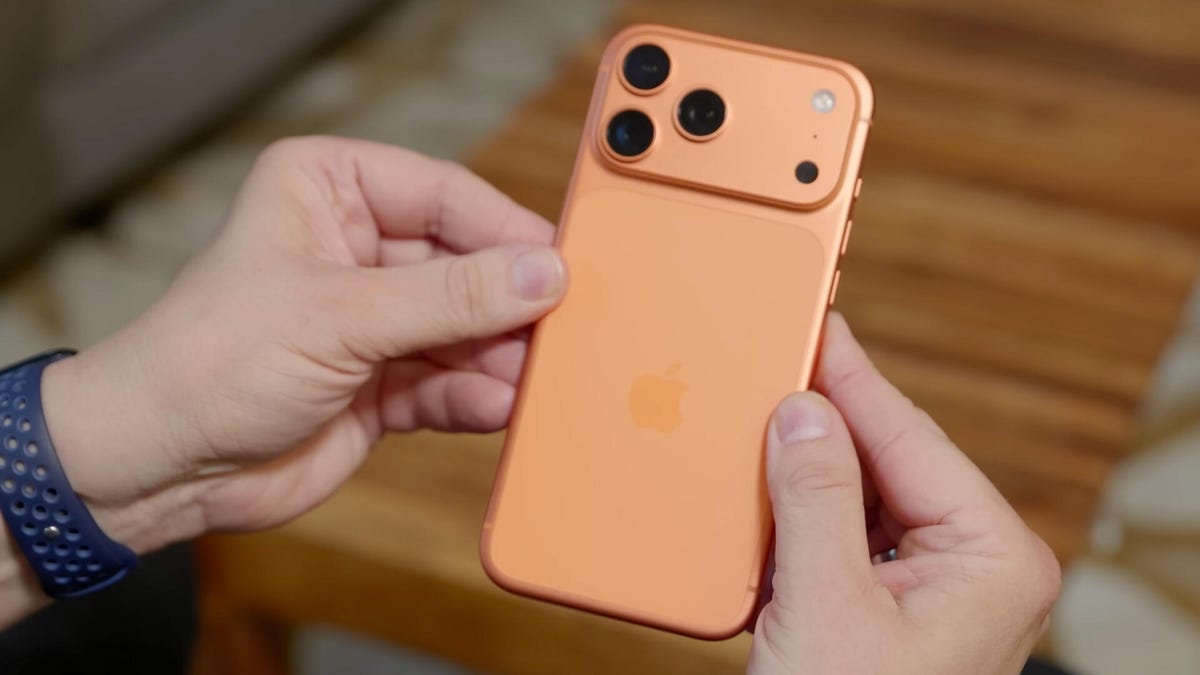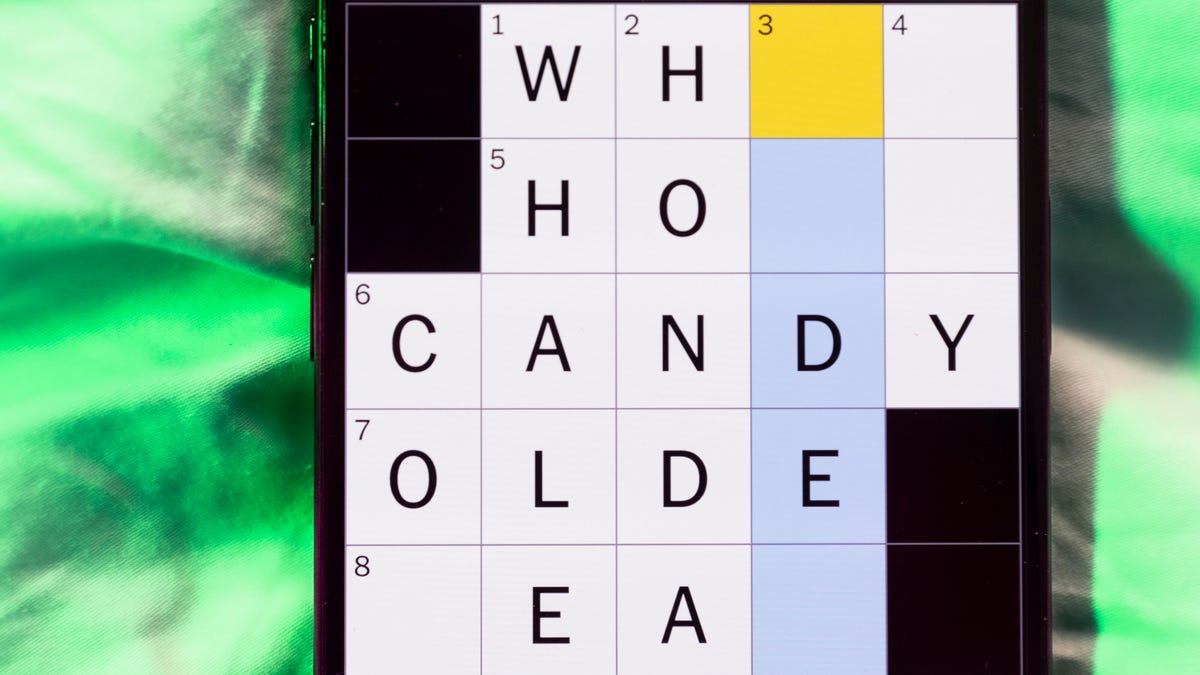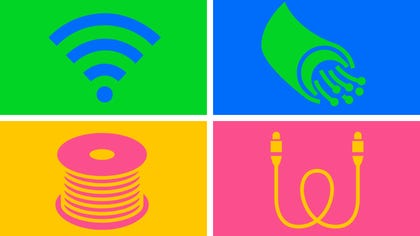Technologies
Best Live TV Streaming Service for Cord Cutting in 2022
Are you looking to cut cable but want to keep live sports, news and originals? YouTube TV, Hulu Plus Live TV or Sling TV could be the services for you.

In this article:
- Top live TV streaming services compared
- Live TV streaming services we also tested
- How to shop for cord-cutting live TV services
- What streaming TV services won’t give you
- Don’t care about live TV? More cord-cutter staples
- Is an indoor or outdoor antenna a viable option?
- Conclusion: Try it yourself
Cutting the cable cord is a popular way to save money, but you may find you need to augment your Netflix or Disney Plus with live broadcasts as well. Enter live TV streaming services. These cancel-anytime live TV bundles give you the ability to watch local and national news as well as live sports and events. All you need is a streaming device or smart TV.
Unlike on-demand platforms, live TV streaming services offer you a live channel lineup, and they also don’t need a contract like cable does. The best services start at $40 a month, which can help save you money on a cable subscription, while the more expensive services such as YouTube TV are closer to $70. Whichever you choose, you can stream live channels such as CNN, NBC, ESPN and Fox on a host of different devices, including set-top boxes and mobile devices. It’s easy to get started — you don’t even need a technician to stop by your home.
Read more: Cable vs. Streaming Services: Which Is Cheaper? We Do the Math
What’s the downside? Pricing and channel availability are two things that are still in a state of flux. For instance, Sling TV went up by $5 in November. In addition, sometimes less popular services, such as AT&T TV Watch TV, TVision or PlayStation Vue, are simply phased out.
Welcome to the brave new world of live TV streaming over the internet. If you need help deciding on the best streaming service or streaming bundle, read on. We’ll continue to update this best streaming service list periodically as things change (which they frequently do).
Live TV streaming services we also tested
- Philo: A cheap live TV streaming service with a variety of channels, but it lacks sports channels, local stations and big-name news networks — although Cheddar and BBC news are available. Philo offers bread-and-butter cable staples like AMC, Comedy Channel, Nickelodeon and Magnolia Network (formerly DIY), and specializes in lifestyle and reality programming. It also includes a cloud DVR and optional add-ons from Epix and Starz. We think most people are better off paying another $15 for Sling TV’s superior service, but if Philo has every channel you want, it’s a decent deal. Read our Philo review.
- FuboTV: There’s a lot to like about FuboTV — it offers a wide selection of channels and its sports focus makes it especially attractive to soccer fans or NBA, NHL and MLB fans who live in an area served by one of FuboTV’s RSNs. It’s also a great choice for NFL fans since it’s one of three services, alongside YouTube TV and Hulu, with NFL Network and optional RedZone. The biggest hole in Fubo’s lineup is the lack of Turner networks, including CNN, TNT and TBS — especially since the latter two carry a lot of sports content, in particular NBA, NHL and MLB. Those missing channels, and the similar $70 price tag, makes it less attractive than YouTube TV for most viewers. Read our FuboTV review.
How to shop for cord-cutting live TV services
Each of the TV streaming services above offers a different mix of channels, so your first step should be choosing one that carries your «can’t miss» cable channels and shows. And some of the most important channels are locals, namely ABC, CBS, Fox and NBC. Not every service offers all of them in every area, but the best streaming service for you will include the majority of what you love to watch, so it is worth shopping around. The live TV streaming service lineups are in constant flux as networks scramble to secure access to popular channels (ones with highly watched original shows and regional sports networks are especially in demand). There’s also the chance that a certain cable channel could disappear from a certain service after a network contract expires, which is what happened in 2020 with the regional sports networks.
These negotiations lead to other changes, too. Over the past few years, Sling TV, Hulu (multiple times), Philo and the newly renamed DirecTV Stream have all raised their prices. Google and Roku resolved a contract dispute which prevented users from downloading the YouTube TV app, while users lost the use of Disney channels for two days due to a different dispute.
Broadly, each of these streaming services can be broken down into two main groups: Budget, with prices ranging between $25 and $40 and few or no local channels; and Premium, with prices from $65 and up including local channels and supercharged cloud DVRs. That’s right, all of the services allow you to record and play back shows, just like a traditional cable or satellite DVR, but they often come with restrictions.
Read more: Top 100 Channels Compared Across Hulu, Sling TV, YouTube TV, FuboTV, DirecTV Streamand Philo
Next, there’s the multistream question. If you want to watch more than one program at the same time — for example, on your living room TV and on a bedroom TV, or the main TV and a tablet or other devices — you’ll want to make sure the video streaming service you’re watching has enough simultaneous streams. Sling Orange only allows one stream at a time, and if you try to watch a second, it’s blocked. Other services have higher simultaneous stream limits.
Keep in mind that, especially if you do have more than one person watching at once on supported devices, you need to make sure you have fast, reliable broadband internet. A 100Mbps download service will cost around $50 to $60 a month, and sadly that’s where the savings of cutting cable can get swallowed up.
Here’s a live TV streaming shopping list to consider:
- Does the service offer your «must-have» channels? See CNET’s comparison of the top 100 channels here.
- Does it offer local channels in your area?
- How good is the cloud DVR?
- Does the interface make it easy to browse for shows?
- Are there enough simultaneous streams for you and your family?
- Is your internet connection up to snuff? See CNET’s guide to improving streaming quality here.
What streaming TV services won’t give you
Streaming TV services are great, but there are some things they can’t do compared with a traditional cable box.
First, it’s worth looking at the channels that you can’t get with any of these live TV streaming services. For example, only two of the services are able to offer PBS: YouTube TV and DirecTV Stream.
With sports returning in force from the pandemic-enforced hiatus, fans will want to make sure they can find the sports channels to follow their teams. Most services carry ESPN and local channels for NFL football, but if you follow a professional baseball or basketball team, you might need its specific channel — called a regional sports network or RSN — to watch regular season games. RSN coverage varies widely for each service. Sometimes, even if you live in the right area, you may be mistakenly blacked out due to an IP address error. If this is the case, you can fix this by signing up for a sports-friendly VPN.
Every live TV service’s video streaming is a few seconds to a minute or more behindthe «live» stream you’ll get from your local cable TV or satellite provider. That means you could get a preview of scores or big plays from Twitter, phone alerts or phone calls from friends slightly before you see the action on screen.
If you’re used to 5.1-channel surround offered by cable or even OTA, then you may be disappointed that YouTube is the only service to offer surround sound on live broadcasts. The other services include stereo sound only on live channels, though 5.1 audio is available on some on-demand material.
Don’t care about live TV? More cord-cutter staples
In 2022, streaming fans have more choices than ever, including NBC/Comcast’s Peacock, AT&T’s HBO Max, Apple TV Plus and Disney Plus. While Peacock differs in that it has live news the other services lack traditional live channels — focusing instead on back catalogs and new original programming — but they can still eat into your entertainment budget.
Netflix: One of the first streaming TV services, Netflix is so popular that it’s become a generic term for streaming in the same way as «Magic Marker» or even «Coke» in the South. And then there’s the ever-popular «Netflix and chill.» Ad-supported plans now start at $7 a month, and the service offers thousands of TV shows and movies, including original TV series like The Crown and Stranger Things (be aware you may need to trade up to the $9 plan to watch some content). Then there are Netflix original movies like Oscar winners Roma and The Power of the Dog.
Amazon Prime Video: The «other» major streaming service, which is included as part of a $139 annual Prime Membership or $15 a month. The interface isn’t as user-friendly as Netflix, but the service also offers shows not on its rival, including original content like The Rings of Power, The Marvelous Mrs. Maisel and The Expanse. Amazon Prime also has the ability to add premium channels (HBO and Showtime and more), making it a potential one-stop shop.
Disney Plus: One of the biggest streaming services to launch in some time, Disney has gathered a mix of movies, TV shows and exclusive content, including Loki, Andor and She-Hulk, for $8 a month (though it will increase in December). Read our Disney Plus review here.
Paramount Plus: Previously CBS All Access, Paramount Plus costs $5 a month or $10 monthly for ad-free streaming. The service offers live TV (in some cities), sports and on-demand content from CBS, MTV, BET, Comedy Central, Nickelodeon and Paramount Network, plus its Paramount Pictures movie studio. Paramount Plus also offers exclusive originals such as Star Trek: Discovery, Picard and the Good Fight.
Vudu and Movies Anywhere: Digital libraries (or lockers) that incorporate legacy UltraViolet content and streaming movies and TV that are only available for purchase, such as new releases.
Peacock: Now live nationwide, Peacock is NBC’s answer to Paramount Plus. Its main claim to fame is that its basic tier, with 7,500 hours of content, is free. Peacock Premium unlocks more content for $5 a month while an ad-lite version called Peacock Premium Plus is $10 monthly.
It’s also worth investigating free, ad-supported services such as Roku Channel, Amazon Freevee, Tubi, Pluto and Crackle, which offer a wealth of content. Read CNET’s roundup of free TV services here.
Is an indoor or outdoor antenna a viable option?
If you have a TV in your house — that is, a screen that incorporates a tuner — you’re part-way to cutting the cord already. An affordable indoor antenna hooked up to your TV will let you watch free TV over the air from any channel you receive in your local broadcast area. Antennas cost as little as $10. See our comparison of indoor antennas here.
You can also add a hardware DVR such as the Amazon Fire TV Recast or TiVo Edge for Antenna if you want. Then you can record those live TV antenna channels, play them back and skip commercials, just like on a standard cable TV DVR. Here’s CNET’s roundup of the best OTA DVRs for cord-cutters.
A solid, lower-cost alternative to live TV streaming services is the combination of an antenna for live local channels and an on-demand service such as Netflix or Hulu. That way you’ll still be able to watch live programming and also have a choice of on-demand content.
Conclusion: Try it yourself
Streaming live TV services are still in flux. Since launch, every service has increased its prices by at least $5 a month, TV channel selections and cities with local channel access are changing all the time, and reports persist about some services losing money, or even closing in the case of T-Mobile’s TVision. While streaming is undoubtedly the future, and cable the past, it will be some time before both prices and the services offered settle in.
That said, if you want a cable-like experience both at home and for on-the-go devices, without the dead weight that a cable subscription brings, a streaming service is worth a look. There’s no contract to sign, and if you don’t like the service you’re on, you can easily switch. So whether you’re looking for a basic package such as Sling TV or want to pay more for a deluxe experience from the likes of YouTube TV, there should be a streaming TV service to suit you.
More streaming advice
- Free Movies: 10 Netflix Alternatives That Will Keep You Entertained
- Best TV Shows to Watch on Hulu
- Best TV Antennas for Cord-Cutters
- Best TV for 2022
- Best Universal Remotes for 2022
- Best 75-inch TVs for 2022
- Best Streaming Device in 2022: Roku, Apple TV, Fire Stick, Chromecast and More
- Budget Hack: Replace Netflix and Other Pricey Subscriptions With These Free Versions
- Best TV Shows to Watch on Amazon Prime Video
Technologies
Nintendo’s Pokemon Legends: Z-A Is a Hit. Just Ask My Kid
Pokemon Legends: Z-A has sucked my family in, and I can’t get my Switch controller back from my son.

I’d love to tell you all about Pokemon Legends: Z-A, arriving this week, and what it’s been like to play on the Nintendo Switch 2. I can mostly do that — but for most of the past five days, it hasn’t really been me playing. What started as co-playing together quickly turned into my kid taking over completely as he got hooked. And honestly, I’d say that’s a good sign.
Nintendo makes a lot of Pokemon games, too many for me to keep track of. But Legends Z-A is the first that’s Switch 2-optimized, although you can play on original Switches, too. I can’t tell you what that’s like, though — my early review access limited me to playing Pokemon Legends: Z-A on the Switch 2 only at home. I was doubtful about how much a city-based game would truly feel like a must-have experience, but so far it’s already become one of my favorite Pokemon games ever.
I’ll let my son tell you. He’s gotten deep into the trading card game and has played most of the recent Pokemon titles over the past year, and he says this is his favorite so far. When I asked him why, he said it’s because the game completely rethinks how battles work. The quick, real-time system feels more immediate and far less sluggish than in past Pokemon games. Plus, he’s loving the story… and honestly, so am I.
A city full of surprises
My son loves the «peculiar» storyline, the fast-paced battles (which he now wants in every Pokemon game) and the constant sense of surprise while exploring Lumiose City.
All of Pokemon Legends: Z-A (at least from what I’ve seen in my 10-plus hours so far) takes place entirely within Lumiose City — a Paris-like metropolis where the CEO of a company called Quasartico Inc. is planning to rebuild everything into a new world where Pokemon and humans can better coexist. The setup reminded me of the Detective Pikachu movie during my demo a few weeks ago, and it turns out my instincts were right.
Pokemon roam in wild zones within the city, occasionally spilling into urban areas, while mysterious rogue «Mega Evolution» Pokemon have begun appearing and threatening the city’s calm. There’s clearly a deeper mystery at play, and while I’m still uncovering it, I won’t spoil anything here.
The game seems to mostly involve a journey to level up in rank from Z to A by battling various Pokemon trainers, but that’s not the whole story. There’s a group of friends you hang out with at a local hotel, along with research missions you have to carry out. Side quests are everywhere. The city, though it can feel a bit sparse at times, stretches all the way up to its rooftops, where all sorts of hidden spots are waiting to be discovered. It feels like a living maze, and one I’m still navigating.
And the city’s always changing, too. Wild zones keep multiplying, and from day to night the city’s dynamics shift. Battles take place at night, with trainers gathering in new pop-up spots each time. It’s not as lively as I’d hoped — this isn’t Grand Theft Pokemon — but the cozy, vibrant world still makes me daydream about what a real-life Universal Pokemon theme park could someday look like.
The Pokemon shine
I keep reminding myself to take extra time to discover and level up my Pokemon. At least that’s what my son’s telling me to do. He loves how many Pokemon can become Mega Evolved in this game, and how much fun the battle moves are to pull off. I’m happy he’s happy. I thought I’d get lost in the RPG aspects of the game, but I think the real-time Pokemon battles put me in a looser state of mind, more able to explore and not feel locked down into systems and rulesets. Swapping Pokemon battle moves and reassigning them to buttons is easy, too.
The stronger focus on trainer battles — and the sheer variety of Pokemon capable of mega evolving — gives the game more of that classic, Pokemon-centered energy than Pokemon Legends: Arceus ever did. I found myself more excited to see how different Pokemon looked and behaved than to uncover new realms to explore. After all, for all of Lumiose City’s secrets, you’re spending a lot more time roaming one massive location than in any other Pokemon game I can remember. Thankfully, the visual upgrades on the Switch 2 make those Pokemon look fantastic in battle.
I do want to spend more time in Lumiose City, though, and can’t help but wonder if this is a glimpse of how all Pokemon games will keep evolving. It’s hard to say, since Legends games like Z-A and Arceus have been more experimental than the rest of the series. But, like Arceus, Z-A is now one of my favorite Pokemon games on Switch. And on Switch 2, it plays smoother and feels better than any Pokemon game ever has before.
Technologies
iPhone 17 Preorders Spike and Overall Phone Sales Aren’t Slowing Down Despite Tariffs
Global smartphone shipments saw a notable increase in the third quarter of 2025. Plus, preorders for Apple’s new iPhone 17 beat out the iPhone 16.

Despite tariffs and market uncertainty, global smartphone shipments increased 2.6% in the third quarter of 2025, compared to the same time last year, according to the International Data Corporation. Additionally, preorders for the iPhone 17, which launched last month, outpaced last year’s iPhone 16.
These increased sales include premium phones like the latest iPhones and Samsung foldables, suggesting yet again that pricier phones still sell in periods of economic strain. It’s a remarkable achievement, says IDC senior research director Nabila Popal, citing shrewd financing options as the reason people keep buying these high-end phones, which cost anywhere from $800 to nearly $2,000.
«[Phone makers] have mastered the art of innovation not only in hardware and software to entice upgrades but also in removing purchase friction. They have flawlessly combined cutting-edge devices with innovative financing models and aggressive trade-in programs that make the upgrading decision a ‘no-brainer’ for consumers,» Popal said in an IDC press release.
Apple sold 58.6 million iPhones this quarter, an increase of 2.9% over the same period in 2024, with more preorders for the iPhone 17 series than its predecessor. But Samsung wasn’t far behind, with its Galaxy Z Fold 7 and Galaxy Z Flip 7 selling better than all of the company’s prior foldables. The company still reigns atop the phone market with 61.4 million phones sold, representing 19% of the market in the third quarter of this year — an increase of 6.3% from the same period last year. Meanwhile, Apple lands slightly behind Samsung with 18.2% market share this quarter.
The other phone makers trailing Apple and Samsung are, in order: Xiaomi, with 13.5% of the market; Transsion, with 9%; and Vivo with 8.9%. The remaining companies in the phones industry, from Chinese stalwarts like Oppo and Honor to Motorola and Google, make up the remaining 31.4% of the market for the quarter. All told, 322.7 million phones were sold, up from 314.6 million in the third quarter of 2024, according to IDC.
IDC’s findings for the third quarter continue the small but steady growth of phone sales over the year, including a modest 1% increase in the preceding three months — which includes the April deadline when President Donald Trump unveiled sweeping tariffs. In the second quarter, IDC cited midrange devices like Samsung’s Galaxy A36 and other phones that started incorporating AI. But even persistent tariffs haven’t slowed down people’s appetites for pricier phones in the third quarter.
Technologies
Today’s NYT Mini Crossword Answers for Tuesday, Oct. 14
Here are the answers for The New York Times Mini Crossword for Oct. 14.

Looking for the most recent Mini Crossword answer? Click here for today’s Mini Crossword hints, as well as our daily answers and hints for The New York Times Wordle, Strands, Connections and Connections: Sports Edition puzzles.
Today’s Mini Crossword has an odd vertical shape, with an extra Across clue, and only four Down clues. The clues are not terribly difficult, but one or two could be tricky. Read on if you need the answers. And if you could use some hints and guidance for daily solving, check out our Mini Crossword tips.
If you’re looking for today’s Wordle, Connections, Connections: Sports Edition and Strands answers, you can visit CNET’s NYT puzzle hints page.
Read more: Tips and Tricks for Solving The New York Times Mini Crossword
Let’s get to those Mini Crossword clues and answers.
Mini across clues and answers
1A clue: Smokes, informally
Answer: CIGS
5A clue: «Don’t have ___, man!» (Bart Simpson catchphrase)
Answer: ACOW
6A clue: What the vehicle in «lane one» of this crossword is winning?
Answer: RACE
7A clue: Pitt of Hollywood
Answer: BRAD
8A clue: «Yeah, whatever»
Answer: SURE
9A clue: Rd. crossers
Answer: STS
Mini down clues and answers
1D clue: Things to «load» before a marathon
Answer: CARBS
2D clue: Mythical figure who inspired the idiom «fly too close to the sun»
Answer: ICARUS
3D clue: Zoomer around a small track
Answer: GOCART
4D clue: Neighbors of Norwegians
Answer: SWEDES
-

 Technologies3 года ago
Technologies3 года agoTech Companies Need to Be Held Accountable for Security, Experts Say
-

 Technologies3 года ago
Technologies3 года agoBest Handheld Game Console in 2023
-

 Technologies3 года ago
Technologies3 года agoTighten Up Your VR Game With the Best Head Straps for Quest 2
-

 Technologies4 года ago
Technologies4 года agoVerum, Wickr and Threema: next generation secured messengers
-

 Technologies4 года ago
Technologies4 года agoGoogle to require vaccinations as Silicon Valley rethinks return-to-office policies
-

 Technologies4 года ago
Technologies4 года agoBlack Friday 2021: The best deals on TVs, headphones, kitchenware, and more
-

 Technologies4 года ago
Technologies4 года agoOlivia Harlan Dekker for Verum Messenger
-

 Technologies4 года ago
Technologies4 года agoiPhone 13 event: How to watch Apple’s big announcement tomorrow

